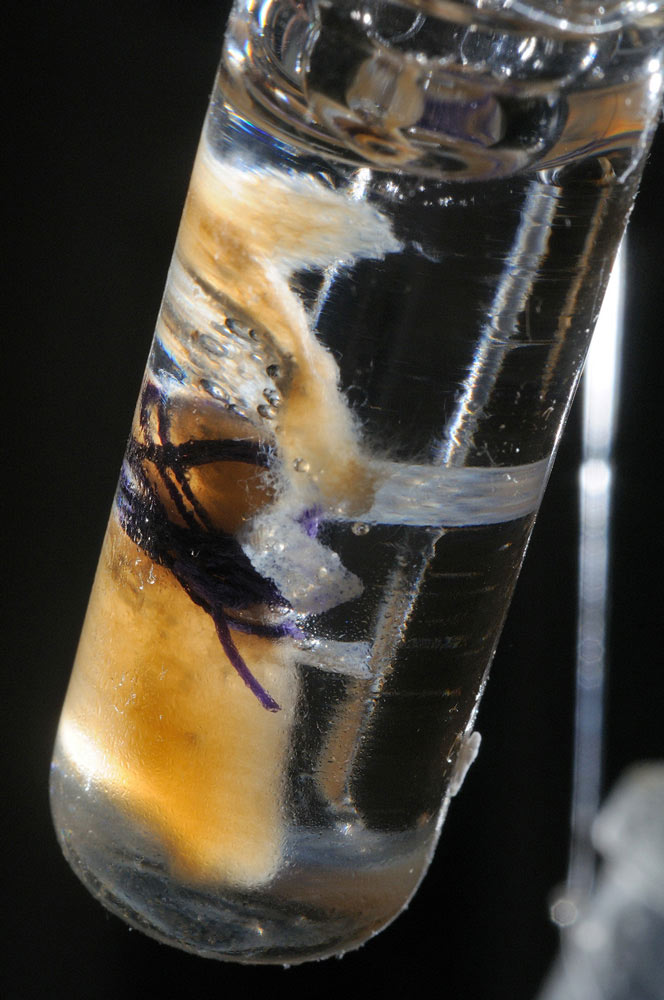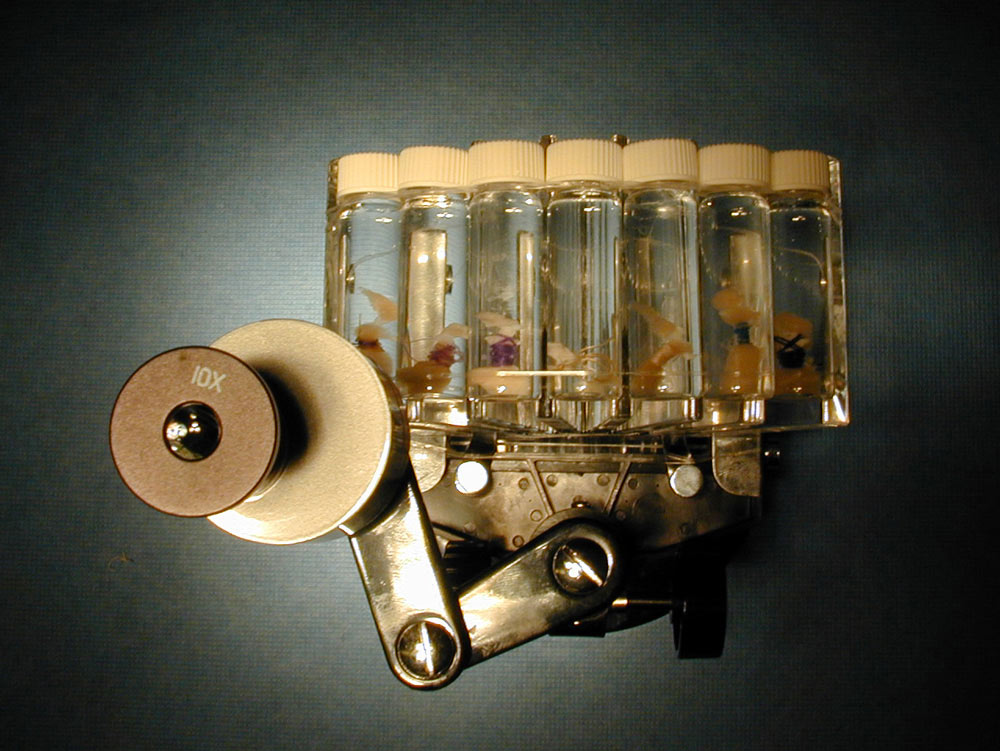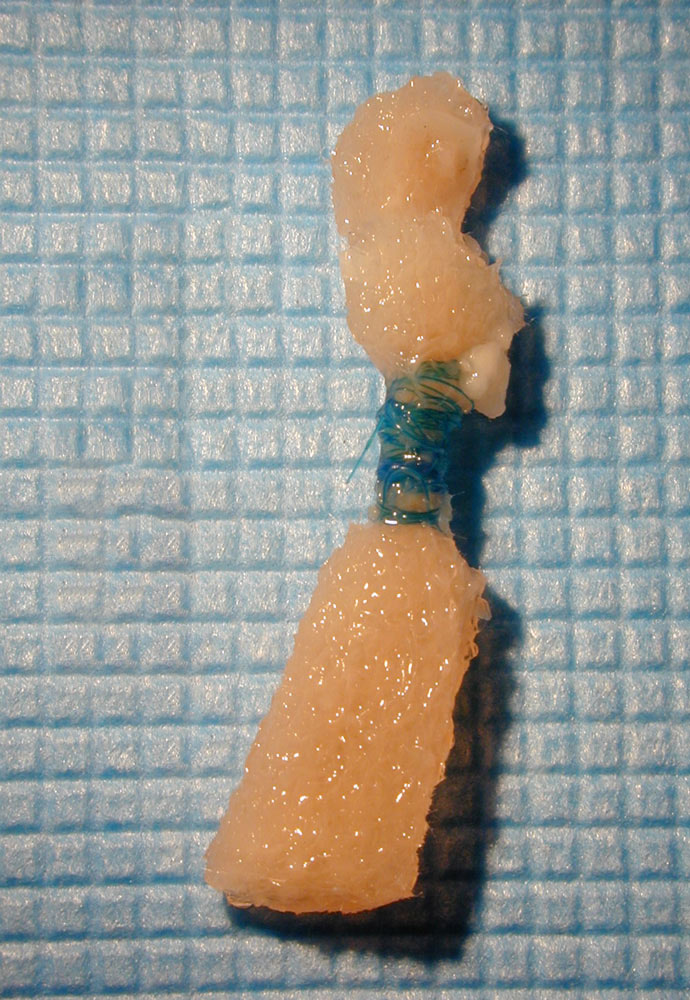Semi-living Worry Dolls
–
2001
Oron Catts, Ionat Zurr & Guy Ben-Ary
The Semi-living Worry Dolls is project that reinterprets the story of the Guatemalan Worry Dolls to deal with contemporary anxieties. According to legend, Indigenous Guatemalans taught their children that they could solve their worries by whispering them to their dolls each night before going to bed. They were allowed to tell one worry to each of their dolls and, by the time they woke, the dolls were supposed to have solved their worry. However, they were only given six dolls and therefore are allowed only six worries each day.
Using this story as the starting point, The Semi-living Worry Dolls is an installation that allows audience members to express their fears about the impact of biotechnology on society and culture. Worry dolls were placed in the gallery and visitors could whisper their fears to each of the dolls. The dolls were hand-crafted using multiple cells—skin, muscle and bone cells—which were grown on a degradable polymer matrix and then stitched with surgical sutures. Each worry doll was given one particular worry:
Doll A: worry about absolute truths and of the people who think they hold them.
Doll B: worry about biotechnology, and the forces that drive it.
Doll C: worry about capitalism and corporations.
Doll D: worry about demagogy and destruction.
Doll E: worry about eugenics and the people who think that they are superior enough to practice it.
Doll F: worry about fear.
G: worry about gene editing. (G is not a doll, but permeates all the other dolls, just as genes exist in all the dolls)
Doll H: worry about hope and unintended consequences that result from those who have it.
The Semi-living Worry Dolls, also known as the Tissue Culture & Art(ificial) Wombs, was first presented in Ars Electronica Festival in Linz, Austria in 2000. The Semi-Living Worry Dolls were the first tissue engineered sculptures to be presented alive in a gallery context.
Links:
Growing Semi-Living Sculptures. Oron Catts & Ionat Zurr. Leonardo Magazine. MIT Press. Issue 35:4. p. 368. August 2002




